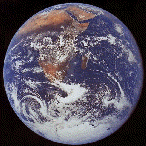
In each chapter we will present a selected set of Internet resources which directly relate to the contents of each chapter.
Internet Resources
"By understanding the ever-increasing energy needs of the world, we can estimate current and future rates of energy consumption. With that knowlege, we can estimate how long our energy resources will last. "
"There were few takers of the 19th century elixir that came to be called "snake oil." It was one of the less successful uses of petroleum, but not the first to claim healing properties. Ancient Persians, 10th century Sumatrans and pre-Columbian Indians all believed that crude oil had medicinal benefits. Marco Polo found it used in the Caspian Sea region to treat camels for mange, and the first oil exported from Venezuela (in 1539) was intended as a gout treatment for the Holy Roman Emperor Charles V."
"Coal is an organic sediment consisting of a complex mixture of substances:
" The sun is an average star and is approximately 4.5 billion years old. It is almost 1.4 million kilometers in diameter, slightly over 100 times the density is about 1.5 times that of water, although it varies tremendously from being practically a vacuum at the surface to being 15 times denser than lead at its core. The temperature of the sun's core is over 15,000,000 K; its surface temperature is just under 6000 K."
"Air is a fluid which moves in circuits, powered by unequal heating of large masses of air. As the Earth's surface is warmed differentially, the air above these surfaces absorbs different amounts of heat. Warmer air rises while cool air sinks which creates the environment for flowing air movement. Winds flow across parallels of latitude, taking heat from equatorial regions to polar regions. This equalizing process causes wind and is of major importance in determining the environments for life on land, global as well as local weather patterns, and a clean, inexpensive source of energy for humans."
" Besides being the home of Tabasco Sauce, Avery Island has a fasinating natural history. The "island" is really a little hill created by the upwelling of ancient salt deposits beneath the deltaic wetlands of Louisiana . The salt was created in a narrow sea during the early stages in the breakup of the supercontinent Pangea. This salt was later buried by sandy and muddy deposits. These accumulated deposits also contained organic material that has been converted to petroleum and natural gas."
Learning about geology from a computer screen is only half as fun as enjoying it in the field!
|Glossary of Geologic Terms|EOS Image Collections|Courses|Resources|Exercises|